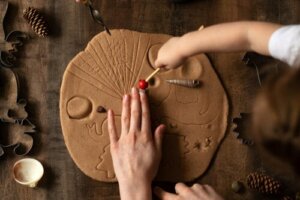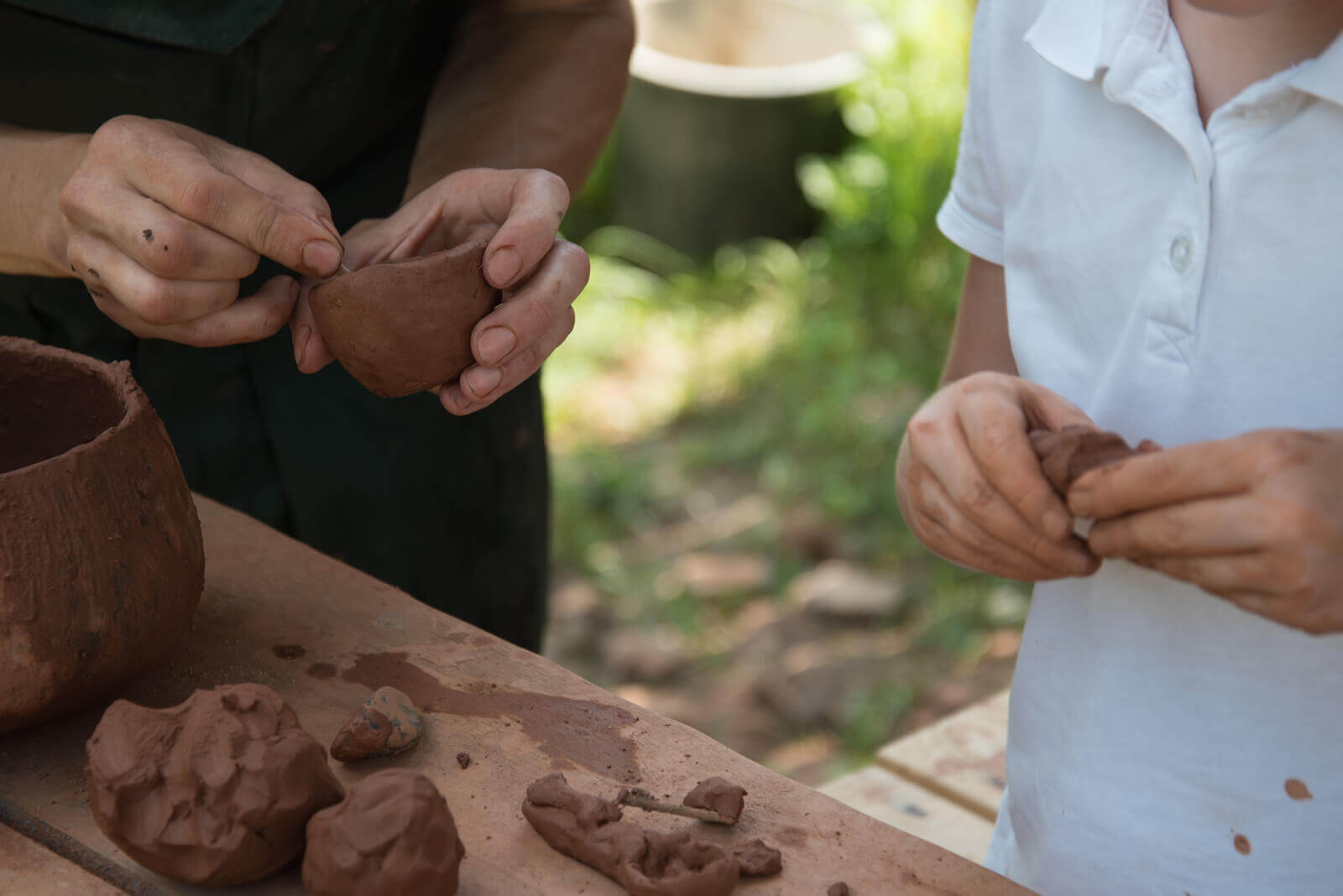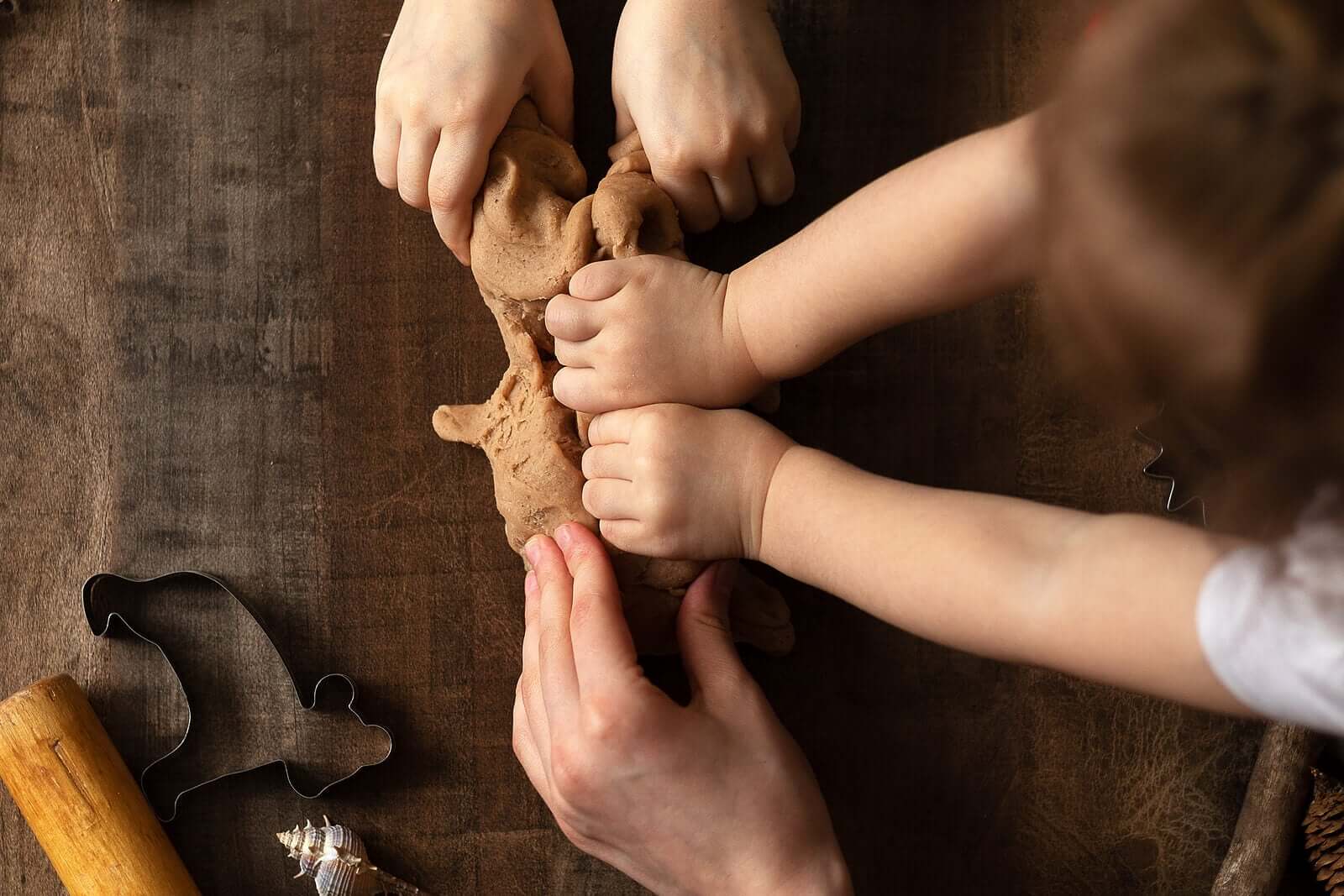Playing with Clay Stimulates Children and Makes Them Happy!

Playing with clay is a stimulating and fun experience that every child should try, and who hasn’t? I’m sure many of you will remember playing with clay as a child. When we touch and manipulate the clay, our mood improves and when children play with it, it makes them happier.
Touching the clay, with its texture and freshness, stimulates not only children’s senses, but also their emotions; it brings them calm, relaxation, and a feeling of happiness.
Children are experts in clay; from a very young age, it’s an instinctive reaction for them to touch wet soil and touch and play with it. So, don’t stop them, as it’s such a happy activity for them!
Encourage children to play with clay

Handling clay has enormous benefits for children, and this is something that parents should take into account. Given its texture, smell, and humidity, it’s a material that provides an enormous sensory experience.
There are also children who find it difficult to touch the clay, and don’t like getting dirty with it. So, we must respect each individual child, and we may have to wait a while before they’re ready to use it.
Each child has a different threshold of sensory stimulation. We have to be patient and wait for the moment when the child will truly enjoy it.
Playing with clay makes children happier
In an interview, the Italian pedagogue Francesco Tonucci said that “mud is the prince of toys” as it’s nothing but can be everything. It’s a natural material that’s available at any time of the year. However, the best time to enjoy it is in summer, as the heat and the need to cool down makes the experience even more enriching.
The health benefits of playing with clay
Recent research has shown that playing with clay (or, more specifically soil in this case) can help to improve the immune system and can also prevent future allergies. We parents try to run and clean their hands when they get muddy, but this doesn’t help their natural defenses, and, in fact, could be a hindrance.
Scientists have discovered that soil contains non-pathogenic bacteria (Mycobacterium vaccae) which are responsible for reducing anxiety and stress, thus increasing the feeling of well-being and happiness. This sensory experience will help children grow up healthily.
Some of the benefits we can find when playing with clay are:
- Improves learning. The serotonin secreted when children are happy makes it easier for them to concentrate and thus helps them to learn better.
- Reduces allergies. The immune system is strengthened. Why? Because it always needs to be stimulated and functioning. If children always stay away from germs, then it could react to other substances that aren’t bacteria, such as pollen, fruits, etc.
- Reduces asthma levels.
- Increases Vitamin D in the body. Playing with clay or soil outdoors helps children receive this essential vitamin.
Ideas for playing with clay
Clay can be a million things if we let children play with it. In addition to the sensory part, it promotes other skills, such as motor, cognitive and linguistic, as well as encouraging their creativity. Let’s see some games to play with clay.
Clay towers
Clay stimulates all of a child’s senses, with its smell, the peculiar noise it makes when handling it, and its wet and fresh texture. A great game is to see who can make the biggest clay tower. How? By making lumps of clay and sticking them on top of each other, making the “tower” higher and higher.
This activity will be great fun and highly stimulating for the children who take part in it.

Mud cooking
This activity is a classic. I myself, as a child, played it hundreds of times. In this case, we’re talking about natural soil or mud. I used to always look forward to going to the countryside so that I could play “mud cooking.”
You can make mud cakes using the plants, flowers and stones around you. Children can also invent their own recipes, and, in this way, they’ll be working on creativity and concentration. Nature really can be the best “toy” for our children.
Clay characters
As we’ve seen, clay is very versatile and you can do a thousand things with it. One of these is to create characters by working the clay in a special way so that the figures they create can be part of their games. With these characters that they create, and other objects they have, they can make their own miniature worlds.
Playing with clay, a play experience that makes children really happy
It’s clear that playing with clay and soil is beneficial for children. So, let them touch it, manipulate it, get dirty with it, and benefit from the wonderful experiences that this material offers them.
In addition, clay will give them a sense of freedom, as they can do so many things with it. At the same time, it will give them so many learning experiences, creating happy and unforgettable memories.
So, let your children play with clay and soil to take advantage of all its great benefits and have fun! You can even join in yourself!
Playing with clay is a stimulating and fun experience that every child should try, and who hasn’t? I’m sure many of you will remember playing with clay as a child. When we touch and manipulate the clay, our mood improves and when children play with it, it makes them happier.
Touching the clay, with its texture and freshness, stimulates not only children’s senses, but also their emotions; it brings them calm, relaxation, and a feeling of happiness.
Children are experts in clay; from a very young age, it’s an instinctive reaction for them to touch wet soil and touch and play with it. So, don’t stop them, as it’s such a happy activity for them!
Encourage children to play with clay

Handling clay has enormous benefits for children, and this is something that parents should take into account. Given its texture, smell, and humidity, it’s a material that provides an enormous sensory experience.
There are also children who find it difficult to touch the clay, and don’t like getting dirty with it. So, we must respect each individual child, and we may have to wait a while before they’re ready to use it.
Each child has a different threshold of sensory stimulation. We have to be patient and wait for the moment when the child will truly enjoy it.
Playing with clay makes children happier
In an interview, the Italian pedagogue Francesco Tonucci said that “mud is the prince of toys” as it’s nothing but can be everything. It’s a natural material that’s available at any time of the year. However, the best time to enjoy it is in summer, as the heat and the need to cool down makes the experience even more enriching.
The health benefits of playing with clay
Recent research has shown that playing with clay (or, more specifically soil in this case) can help to improve the immune system and can also prevent future allergies. We parents try to run and clean their hands when they get muddy, but this doesn’t help their natural defenses, and, in fact, could be a hindrance.
Scientists have discovered that soil contains non-pathogenic bacteria (Mycobacterium vaccae) which are responsible for reducing anxiety and stress, thus increasing the feeling of well-being and happiness. This sensory experience will help children grow up healthily.
Some of the benefits we can find when playing with clay are:
- Improves learning. The serotonin secreted when children are happy makes it easier for them to concentrate and thus helps them to learn better.
- Reduces allergies. The immune system is strengthened. Why? Because it always needs to be stimulated and functioning. If children always stay away from germs, then it could react to other substances that aren’t bacteria, such as pollen, fruits, etc.
- Reduces asthma levels.
- Increases Vitamin D in the body. Playing with clay or soil outdoors helps children receive this essential vitamin.
Ideas for playing with clay
Clay can be a million things if we let children play with it. In addition to the sensory part, it promotes other skills, such as motor, cognitive and linguistic, as well as encouraging their creativity. Let’s see some games to play with clay.
Clay towers
Clay stimulates all of a child’s senses, with its smell, the peculiar noise it makes when handling it, and its wet and fresh texture. A great game is to see who can make the biggest clay tower. How? By making lumps of clay and sticking them on top of each other, making the “tower” higher and higher.
This activity will be great fun and highly stimulating for the children who take part in it.

Mud cooking
This activity is a classic. I myself, as a child, played it hundreds of times. In this case, we’re talking about natural soil or mud. I used to always look forward to going to the countryside so that I could play “mud cooking.”
You can make mud cakes using the plants, flowers and stones around you. Children can also invent their own recipes, and, in this way, they’ll be working on creativity and concentration. Nature really can be the best “toy” for our children.
Clay characters
As we’ve seen, clay is very versatile and you can do a thousand things with it. One of these is to create characters by working the clay in a special way so that the figures they create can be part of their games. With these characters that they create, and other objects they have, they can make their own miniature worlds.
Playing with clay, a play experience that makes children really happy
It’s clear that playing with clay and soil is beneficial for children. So, let them touch it, manipulate it, get dirty with it, and benefit from the wonderful experiences that this material offers them.
In addition, clay will give them a sense of freedom, as they can do so many things with it. At the same time, it will give them so many learning experiences, creating happy and unforgettable memories.
So, let your children play with clay and soil to take advantage of all its great benefits and have fun! You can even join in yourself!
All cited sources were thoroughly reviewed by our team to ensure their quality, reliability, currency, and validity. The bibliography of this article was considered reliable and of academic or scientific accuracy.
- Matthews, D. M., & Jenks, S. M. (2013). Ingestion of Mycobacterium vaccae decreases anxiety-related behavior and improves learning in mice. Behavioural processes, 96, 27-35.
- Reber, S. O., Siebler, P. H., Donner, N. C., Morton, J. T., Smith, D. G., Kopelman, J. M., … & Greenwood, B. N. (2016). Immunization with a heat-killed preparation of the environmental bacterium Mycobacterium vaccae promotes stress resilience in mice. Proceedings of the National Academy of Sciences, 113(22), E3130-E3139. https://www.pcaaz.org/wp-content/uploads/2017/07/E44-Nature-Play-Real-Benefits.pdf
- Lowry, C.A.; Hollis, J.H.; De Vries, A.; Pan, B.; Brunet, L.R.; Hunt, J.R.F.; Paton, J.F.R.; Van Kampen, E. et al. (2007). “Identification of an immune-responsive mesolimbocortical serotonergic system: Potential role in regulation of emotional behavior”. Neuroscience.
This text is provided for informational purposes only and does not replace consultation with a professional. If in doubt, consult your specialist.








